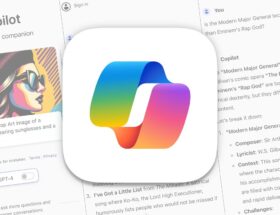Connecting to FTP in Finder macOS.
 2 Facebook x.com Reddit
2 Facebook x.com Reddit
File Transfer Protocol is an old network protocol for transferring files to network servers. Here's how to use it on your Mac.
We previously looked at the terminal-based SCP protocol, which allows you to securely copy files over the network.
How to Use SSH for Secure Connections on macOS discussed the SSH File Transfer Protocol (SFTP), which is considered more secure because it uses a public key infrastructure (PKI) to exchange key information for authentication.
How to use SFTP and rsync to transfer files on macOS, describes how to use SFTP and rsync, a UNIX backup and recovery tool.
There is another older protocol called File Transfer Protocol (FTP) that allows you to transfer files to and from web servers.
FTP is generally considered obsolete (and insecure) because it exchanges login information and files in plain text — which poses a security risk. Anyone outside your network (or an attacker inside) can eavesdrop on an FTP session to steal passwords and data.
FTP can be secured using SSL/TLS (FTPS) web encryption, but even this is no longer considered best practice.
If you still need to connect to an old-school FTP server, there are several macOS apps you can use. Both third-party GUI FTP applications and a built-in ftp command line tool (CLI) in the macOS terminal are available.
You can also connect to some FTP servers in MacOS Finder.
Until recently, FTP was included in most web browsers using the ftp://URL prefix, but many modern browsers, including Firefox, have stopped supporting the FTP protocol.
FTP History
FTP servers are integrated into most common web servers, such as Apache from the Apache Foundation and other. The FTP server daemon runs in the background on the server, listening for incoming connections and file transfer requests.
The original FTP specification was published in RFC 11 in April 1971. Before TCP/IP and the Internet became popular, FTP ran on the ARPANET Network Control Protocol (NCP).
ARPANET was the predecessor of the modern Internet, developed by the Defense Advanced Research Projects Agency (DARPA). In fact, the Internet came about because the Department of Defense needed a military-grade communications network that could withstand a nuclear attack.
The official beginning of the modern Internet standard TCP/IP began on January 1, 1983, when the entire ARPANET migrated from NCP to TCP/IP.
This was before the advent of graphical user interfaces, and most FTP was done on UNIX text terminals using the ftp CLI command, which is still present in macOS.
FTP connection
When an FTP client sends a request, the server checks the authentication details and , if valid, allows the user to connect. Once connected, users can view the contents of the directory, upload, download and delete files.
Typically, a text username and password are sent to the server, but many FTP clients can configure PKI keys to control logins.
Keys are much more secure because unless someone stole the user's private key from their computer, PKI keys are nearly impossible to crack because they are securely encrypted.
With GUI FTP clients, you connect either by pointing to a public key file on your Mac or by entering a username and password into the application's login panel.
We will now move on to the various GUI clients.
CLI Command
You can see how to use the command line interface version of FTP in the Terminal application. by launching Terminal from the /Utilities folder, then typing man ftp and pressing Return.
FTP uploads using the CLI are sent to the current working directory on your Mac in Terminal unless you specify a different destination.
You can view the current working directory or password in the Terminal using the pwd command.
The CLI also allows you to specify the source server, destination, and files or folders to download. If you download a folder, all of its contents are downloaded unless you specify otherwise.
Third-party FTP clients for Mac
GUI FTP clients have been available on Macs since the early 1990s. Then Apple released its own FTP client application called Cyberdog, which appeared around the time the Internet became mainstream.
Cyberdog, from Apple, circa 1996.
There are still a few of these FTP clients in existence today. Most Mac FTP application providers have left the field due to their increasing obsolescence, but a few remain.
The most popular FTP clients for Mac today are:
- Transmit by Panic ($45, free trial)
- FileZilla (free, plus paid Pro version)
- Fetch ($29, free demo)
- Cyberduck ($10 with free demo) version)
- Forklift from Binary Nights
- CloudMounter ($29 for one person, $99 for a team)
- Terminus (SFTP)
- Commander One
https://panic. com /transmit/
There are many other client applications available today that can be downloaded both online and from the Mac App Store.
Transmit, FileZilla, Forklift and CloudMounter are available in the Mac App Store, as well as on publishers' websites.
Transmit, Cyberduck and CloudMounter can also connect to various cloud file storage services. They support Amazon S3, Microsoft Azure, Google Drive, Dropbox, Backblaze and others.
The best modern FTP apps for macOS.
Cyberduck and CloudMounter support various other cloud services such as OpenStack Swift, Box and Files.com.
Cyberduck also has an additional component that allows you to mount any FTP server or directory as a network drive on your macOS desktop. Once connected, you can browse, upload and download files to the remote server as if it were a local drive.
In some cases, you can also do this in the MacOS Finder (as we'll see below).
Mountain Duck provides some additional functionality over the regular Finder connection.
Set the protocol, server name, user and password, and passive mode in the Transmit connection window.
Transmit and Fetch are considered the two original Mac FTP clients GUIs since they appeared back in the 1990s on Apple's Mac OS 9 when the Internet became popular. Fetch actually came out in 1989, when macOS was called System 7.
Both Transmit and Fetch are great apps, but in our opinion, Transmit is the gold standard. It also has the most advanced and user-friendly user interface.
FileZilla is considered the free FTP standard for both Mac and Windows. It has a lot of features, but the user interface is considered a little less polished than other FTP apps for Mac. FileZilla is also open source.
One nice feature of FileZilla is the detailed connection log panel when connected (which can be hidden or shown). When your Mac connects to a remote server, this panel displays a detailed log of connections.
If something goes wrong while connecting, you can see exactly what the problem is in the log panel.
ForkLift can also act as a local two-pane local file browser, so you can view both local files on your Mac and remote FTP servers in the same window.
Terminus is an SFTP application, but it also has a terminal-like command line interface using SSH.
Commander One is an FTP client that also has a two-pane file browser.
Connecting to FTP in the Finder
In the macOS Finder, you connect to an FTP server using the menu optionGo->Connect to Serverin the Finder menu bar at the top of the screen. Enter the name or address of the FTP server using the ftp://protocol.
For example:
Use the Connect to Server window.
If the server is available, you will be given a confirmation notification. Click Connect.
If something goes wrong, you will see a warning that the server is unavailable. In this case, check your connection details and try again.
Click “Connect”.
The server will prompt you to enter a name and password or indicate whether you want to connect as a guest. . Most FTP servers do not allow guests, but some do.
If you want to connect as a guest, select the Guest radio button. Otherwise, click Registered User and enter your username and password.
Guest access usually does not require a username or password to connect.
Click Connect:
Enter your connection details.
If everything goes well, you will be on communications. The FTP server will be installed as a drive icon on the Finder desktop, and a new Finder window will open for that volume.
Mapped FTP volumes look the same as local disk icons on the desktop, except they have a silver icon with multiple users on them.
Mounted FTP server window.
Some FTP servers allow anonymous connections—those that use generic credentials instead of a real name and password. These servers typically enter “anonymous” as the user and your email address as the password.
Anonymous FTP servers usually accept any email address, so you can create one if you want. No formalities are required for connection.
Some anonymous FTP servers only allow file uploads, with special “inbox” or “download” folders having write permissions set to allow users to upload new files so that the server administrator can view them.
If files can be uploaded to a folder on the server, the small lock icon in the lower left corner of the window will not be present. In the image shown above, the catalog is read-only, as indicated by the small pencil with a line through it in the bottom left corner.
Once connected, you can upload and download files and folders to the server directory by simply dragging files and folders in and out of the window onto your Mac's desktop. As the files are transferred, the standard file copying process window will appear.
FTP is an older protocol, but many web servers still use it. It's useful to know the different connection methods in case you need to transfer files.
Follow AppleInsider on Google News.









